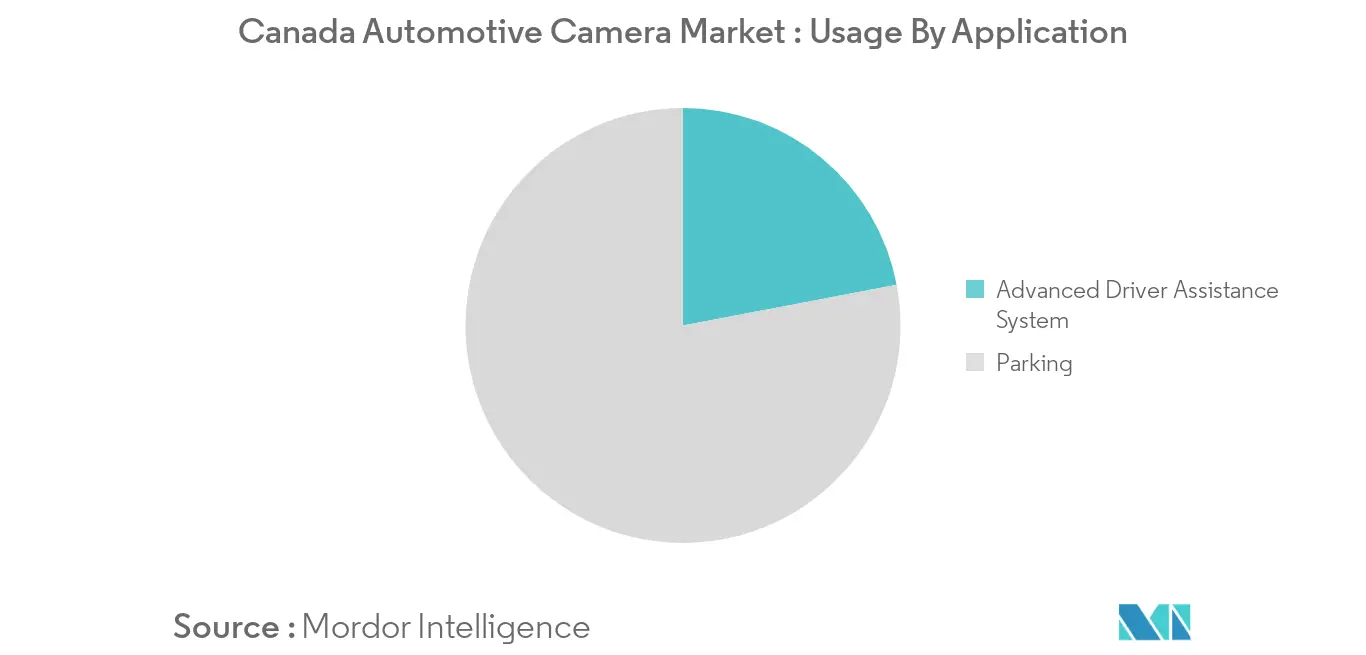Market Trends of Canada Automotive Camera Industry
Customers Demand For Safety Features
The passenger car active and passive safety systems market is in its growth stage, driven by the market in the United States of America and Canada. Canada is on the verge of upgrading the five-star requirements to feature in the active safety and collision prevention, beginning in 2018. This would also help to change the market dynamics of the automotive safety systems in the Canadian industry, where safety would be the most critical issue addressed in the forecast period. Top 5 OEMs produce more than 2 million vehicles at their Canada facility. Thereby, an increased focus on automotive safety is predicted to help to augment the market for automotive camera significantly.
Automotive cameras are a part of the active safety systems that are typically defined as systems that contribute to the active avoidance of accidents. Increasing consumer concern over safety is a critical factor contributing to the growth of active safety systems. However, the installation costs for active safety systems are quite high, deterring the adoption of safety systems to some extent. OEMs have started to install more advanced active safety systems in an extensive range of passenger vehicle mid-price segments to differentiate their products in the highly competitive automotive market. The growth in the market is also characterized by the increase in the demand for passenger luxury vehicles in the country. The industry is characterized by significant machinery and equipment, which is used for researching, developing, manufacturing, and testing new equipment.

Technological Advancement to Drive Market
Factors such as increasing market penetration of premium cars and safety installations per vehicle are accelerating the demand for automotive night vision systems and driver monitoring systems. In advanced countries like Canada, the safety systems including automotive cameras featured in compact and mid-sized vehicles are advanced and can be compared to those available in Europe. This is primarily driven by the high level of safety awareness among the local population. The automotive camera market is expected to be driven by the export-driven demand for park assist systems and other advanced driver assistance systems like lane-departure warning systems in European and North American countries.
Automotive cameras have evolved significantly to integrate with the other safety systems of the vehicles and assist the driver. For instance, the ZF TRW's lane departure warning system uses video camera technology that is integrated with an electrically powered steering to enable quick feedback for active lane-keeping assistance. The video camera detects when the vehicle is drifting toward the lane markings, and the electric steering provides the driver with guidance through the steering wheel to stay in the lane. The camera-based forward collision warning identifies the closest object in the vehicle's path and determines its scale change. If the size and optical growth of the object indicate a potential collision, a warning is given to the driver.
The market has been segmented based on the vision technology type, application type, and vehicle type. The automotive sensing camera is forecasted to gain profit during the forecast period, specifically.
Automotive manufacturers in the region like Hyundai, Kia, Nissan aim to increase their revenue by strategically manufacturing advanced automotive cameras technology like pedestrian detection, automatic high-beam control, and speed limit sign recognition systems. Apart from these, global players such as Robert Bosch, Autoliv Inc., Continental, and TRW Automotive have their significant presence in Canada, and this is also expected to influence the market demand for automotive driver monitoring systems and automotive cameras in general.


